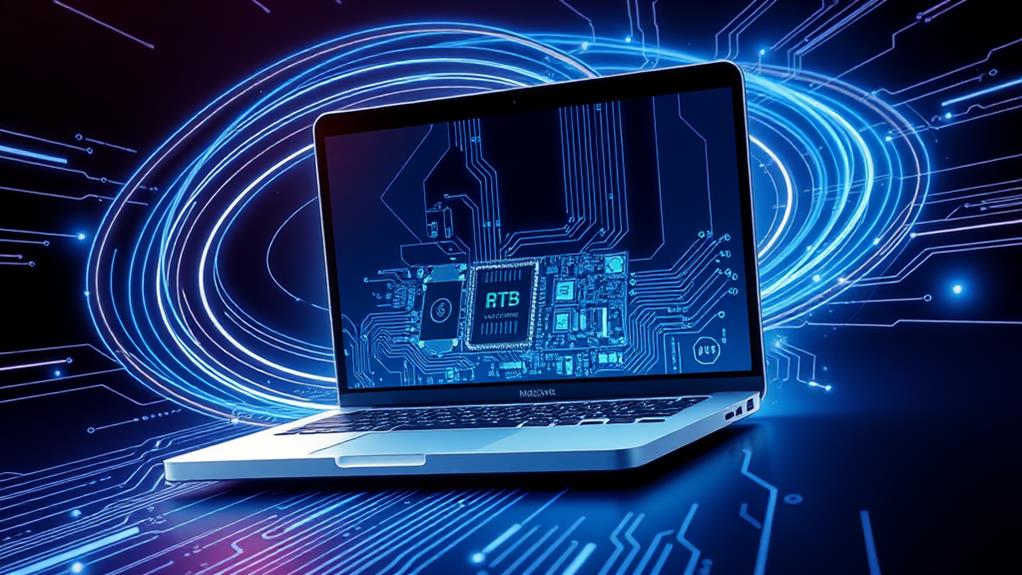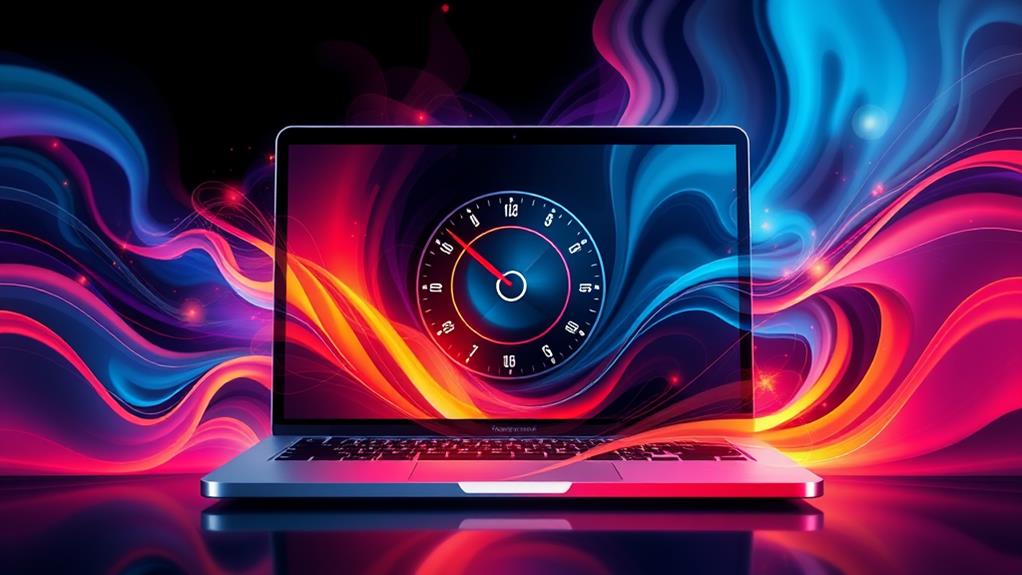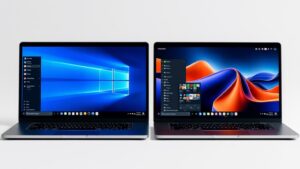After a macOS software upgrade, you'll want to boost your Mac's performance to get the most out of your machine. The first step is to restart your Mac regularly to clear out RAM and install any pending updates. You can also use Activity Monitor to identify and close resource-heavy applications, which will help enhance system efficiency. By addressing these basic steps, you'll be laying the groundwork for a faster, more efficient Mac. But there's more to explore in optimizing your Mac's performance—let's take a closer look.
Key Takeaways
- Regular restarts help free up RAM and improve performance, especially after a software upgrade.
- Closing unused applications and uninstalling rarely used apps can free up system resources
Restart Your Mac Regularly
To keep your Mac running smoothly after a macOS upgrade, adopt the habit of restarting your Mac regularly. You might be thinking, "Do I really need to restart my Mac? It's not like it's a PC!" But trust me, it's a good idea. Restarting your Mac is like hitting the refresh button on your computer. It frees up RAM, installs any updates that are waiting, and gives your computer a little breather. Think of it as scheduled maintenance for your Mac. Additionally, diagnostic services can identify underlying issues that may benefit from a restart.
To make restarting a habit, go to System Preferences > General > Software Update, and check if there are any updates waiting to be installed. If there are, click Update Now. You can also set your Mac to automatically check for updates. This way, you'll get a notification when an update is available. Don't worry, it's not as painful as it sounds. In fact, restarting your Mac can be a game-changer for its performance. So, take a minute and give your Mac a restart. It'll thank you for it.
Manage Open Applications
Managing open applications is essential for maintaining your Mac's performance after a macOS upgrade. You need to prioritize which apps deserve your Mac's resources and which can take a backseat. Think of it like a party – you can't invite everyone, or it gets too crowded and slow.
Here's the deal: macOS needs some apps to run smoothly, like Safari or Mail. But others, like video editing software or games, are total resource hogs. They'll suck up all the CPU and RAM they can get, leaving your Mac sluggish. Consider also how software glitches can exacerbate these performance issues, making it vital to manage your applications wisely. So, it's time to set some application priorities.
Open Activity Monitor (you can find it in Applications > Utilities) to see which apps are using the most resources. You might be surprised at which ones are the biggest offenders. Close any apps you're not using, and consider uninstalling ones you haven't touched in months. This will help with resource allocation, ensuring your Mac focuses on what's important. By managing open applications, you can keep your Mac running like a well-oiled machine after that macOS upgrade.
Upgrade RAM and Storage

Upgrading your Mac's RAM and storage can greatly boost its performance after a macOS upgrade. Now that you've managed your open applications, it's time to think about hardware. Let's explore how you can upgrade your RAM and storage to get your Mac running smoothly again.
First, check your Mac's RAM compatibility. You can do this by clicking the Apple logo in the top left corner of your screen and selecting "About This Mac." Then, click "System Report" and scroll down to the "Hardware" section. Here, you'll find the RAM specifications for your model. Make sure to purchase RAM that matches these specs. It's also essential to verify the repair costs for MacBooks before upgrading, as it might influence your decision to repair or sell.
Next, consider your storage options. If you're using a traditional hard drive, it might be time to switch to an SSD (solid-state drive). SSDs are much faster and can greatly improve your Mac's performance. You can also clean up your existing storage by deleting unused files and apps. Use tools like CleanMyMac X to free up RAM and storage space easily. Upgrading your RAM and storage can make a huge difference in your Mac's performance, so don't hesitate to give it a try.
Resolve Fan Speed Issues
Identifying and resolving fan speed issues in your Mac is essential for maintaining ideal performance and preventing overheating. You might notice your fans going haywire after a MacOS upgrade, causing thermal throttling and a ruckus that sounds like a jet taking off. This isn't just noisy; it can also slow down your Mac and make it run hot.
To tackle this, you can use software like TG Pro to monitor and control your fan speeds. Here's a quick rundown of how TG Pro displays fan information:
| Display Item | Description |
|---|---|
| Fan Name | Name of the fan, e.g., "Left Side" |
| Current Speed | Current speed of the fan, e.g., 2143 RPM |
| Minimum Speed | Minimum speed of the fan, e.g., 2160 RPM |
| Maximum Speed | Maximum speed of the fan, e.g., 5927 RPM |
| Fan Modes | Available fan control modes, e.g., Auto Boost |
Identify Hidden Lag Causes

Your Mac's performance issues may not always be as obvious as a screaming fan or an overheating CPU. Sometimes, it's the hidden culprits that are slowing you down.
To identify these hidden lag causes, you need to explore the inner workings of your Mac. Here are some steps to take:
- Monitor Background Processes: Open Activity Monitor (you can search for it using Spotlight by pressing Command + Space) and check the CPU tab to see which apps are using up resources.
- Adjust System Preferences: Look for resource-intensive settings like animations and transparency. Turning these off can give your Mac a boost.
- Clean Up Your Disk: Junk files and clutter can slow your Mac down. Regular cleanups can help keep things running smoothly.
- Check for Pending Updates: Verify your system and apps are up to date. Sometimes, a simple update can resolve underlying issues causing lag.







